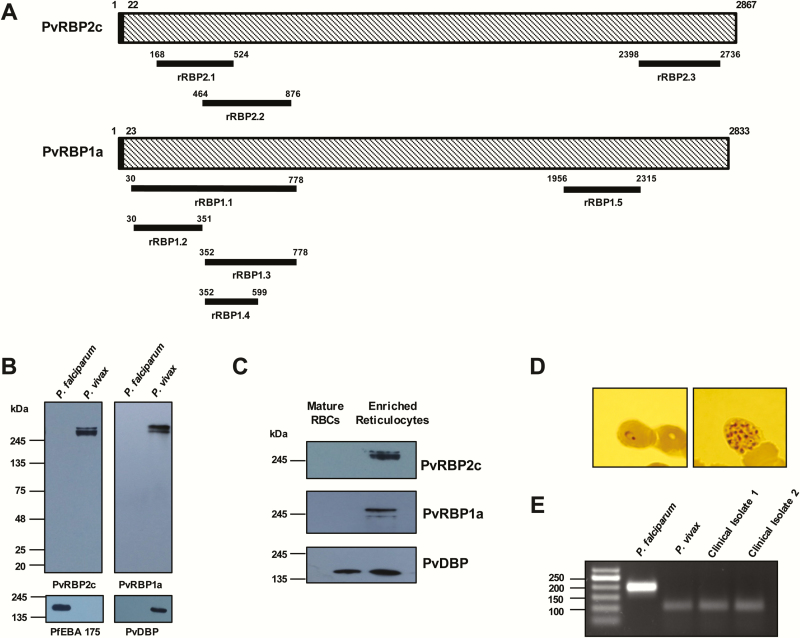Figure 1.
Structure, expression, and reticulocyte-binding activity of the native Plasmodium vivax reticulocyte-binding proteins (PvRBPs). A, Schematic diagram of the PvRBP2c and PvRBP1a parasite proteins, highlighting the regions against which the recombinant proteins have been produced (black bars). B, Native PvRBP2c and PvRBP1a parasite proteins were detected by means of immunoblotting only in the P. vivax protein extracts by the specific anti-rRBP2.2 and anti-rRBP1.1 mice antibodies. Expression of native PfEBA-175 was detected only in the Plasmodium falciparum extract, confirming no cross-contamination of the P. vivax–infected samples with P. falciparum. Native P. vivax Duffy-binding protein (PvDBP) parasite protein was detected only in the P. vivax extract, confirming the specificity of the vivax sample. C, Binding of native PvRBP2c and PvRBP1a from the P. vivax culture supernatant was detected only with enriched reticulocytes and not with normal erythrocytes (red blood cells [RBCs]). Native PvDBP from the same culture supernatant bound with the same set of normal erythrocytes and enriched reticulocytes. Reticulocytes were enriched over a Percoll cushion. D, Blood film of the P. vivax–infected sample showing the P. vivax ring-stage and schizont-stage parasites. E, Identities of the P. vivax–infected samples were confirmed by means of nested polymerase chain reaction (PCR) amplification of 18S ribosomal RNA sequences, using primers specific for P. vivax and P. falciparum. The specific PCR-amplified DNA fragments from P. vivax and P. falciparum correspond to 100 and 200 base pairs (bp), respectively. Two representative P. vivax–infected clinical isolates are shown that correspond to the 100-bp size, confirming their identity. Abbreviations: PfEBA-175, P. falciparum erythrocyte binding antigen 175; rRBP, recombinant RBP.

